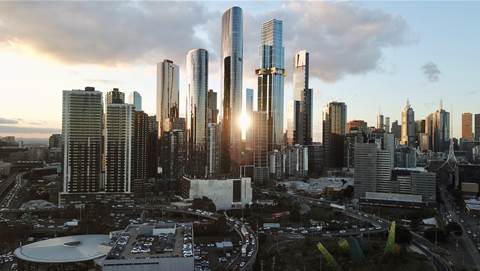Telstra has outlined a plan to sell at least $5 billion of its future NBN revenues, though it will need approval from the government and NBN Co to do so.

CEO Andy Penn first raised the prospect of selling some of the future revenue from its long-term infrastructure leases and other payments to be made under the definitive agreements with NBN Co at the telco’s investor day late last year.
The plan to offload between $5 billion and $5.5 billion of these future “receipts”, which was outlined today, confirms speculation in June about the size of the proposed sell-off.
Recurring receipts from NBN Co lease payments run until 2045 but Telstra has been looking for a way to bring a portion of that revenue forward.
The payments from NBN Co to access Telstra infrastructure are expected to be worth just under $1 billion a year “by the end of the NBN migration period”.
The proposed sale represents about 40 percent of the total receipts that Telstra expects to receive from its fibre and exchange leases, Penn said.
He said the proceeds would go to reducing debt “by around $1 billion … with the balance to support a capital management program to enhance shareholder returns, most likely through a series of on- and off-market buybacks".
“The proposed transaction is subject to agreement and a number of steps including approvals and consents from investors, the government and NBN Co,” Penn said.
“We are currently in discussions regarding these matters.
“We cannot confirm whether they will be achieved but we will update the market in due course.”
The ABC speculated yesterday that the sale could be of interest to the likes of pension funds and asset management firms. "It would be a patient investor with a low cost of capital looking for a steady annuity style-return," the report said.
Telstra indicated it would maintain an equity interest in the portion of revenues being sold.
"The structure of [the transaction] would comprise both debt and equity and it would involve Telstra - if it did proceed - having approximately 25 percent of the equity component," Penn said.
"But it wouldnt be appropriate for me to provide more detail at this time."
NBN costs laid bare
Confirmation of the scope of the planned sell-off came as Telstra declared it had “met guidance” in its full year results. Penn said it had been “a strong year”.
However, he warned that the costs of servicing fixed-line customers on the NBN in future meant some pain was coming for Telstra’s earnings.
The telco flagged as much back in May 2016 when it forecast the NBN to have a negative impact of $2 billion to $3 billion on future earnings before interest, tax, depreciation and amortisation (EBITDA).
This is largely the financial result of no longer having a wholesale fixed-line business once the NBN is complete, although the upcoming transition of business DSL and ISDN services over to the NBN would also have an impact, to the tune of up to $1 billion.
“We are entering a very material period for the NBN. The rollout is accelerating,” Penn said today.
“This will clearly have a significant impact on the whole of the industry but it particularly affects Telstra because it essentially represents the renationalisation of a material part of our business.
“Of course we reported to the market in May 2016 that the consequence of that would be an expected negative impact on our ongoing EBITDA of between $2 billion and $3 billion per annum.
“Our view is, given the latest outlook of NBN CVC charges, which we estimate will more than double over the coming years, we now expect the impact is likely to be at the top of this range. In other words, around $3 billion.”
CVC or connectivity virtual circuit is a backhaul charge imposed by NBN Co. It is one of the main vehicles NBN Co is using to bring in revenue.
Both CVC and industry-wide ARPU pressure would keep margins on NBN retail products low, Penn said.
"I'd assume [NBN retail margins are pretty low just because of the way the CVC charges are increasing and industry ARPUs are under some pressure, and then there’s more value/cost going into the [retail broadband] products as well," Penn said.
Chief financial officer Warwick Bray said, however, that Telstra had focused some efforts on driving cost out of NBN sign-up processes.
"In the NBN cost to connect we’ve got the unit cost down 18 percent in the year, and the fundamental reason that we’ve got it down is improving our customer outcomes," Bray said.
"We’re getting it right first time."
Telstra continues to do well on securing NBN connections, claiming to have 52 percent of the NBN market, though this excludes Sky Muster which Telstra does not resell.
Penn said future difficulties posed by the NBN rollout meant that Telstra’s strategy to transform - particularly through mobile - and to seek productivity improvements was justified.
The telco today said it would move forward its plans to hunt out $1 billion in productivity improvements by a year - from FY21 to FY20 - and a further $500 million in cost savings.


















.png&h=141&w=208&c=1&s=1)

